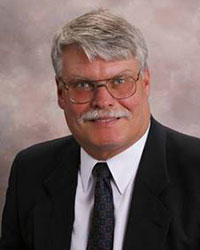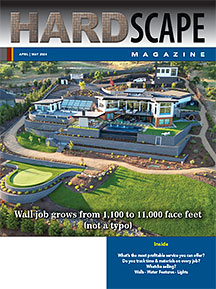Articles written by guest contributors

Monroe Porter
Spend more of your work time generating income
By Monroe PorterI am not talking about working longer hours, but rather spending a larger percentage of the day producing. Productivity is often a misunderstood concept. Productivity is about what you actually install and produce, not about how hard you work. You can work really hard hand-carrying material but maybe a forklift can do the same thing in a fraction of the time. To understand more about productivity, let’s start with some basic concepts.
Craft time is the time spent actually installing a project. It does not include material handling, set-up, clean-up or any non-hands-on field time. You must actually be laying block, hammering, gluing, or whatever it takes to move the job towards completion. Reading prints, drive time, layout, material handling, equipment maintenance all are important but not necessarily a craft-time activity.
A few years ago, I was hired by a large interior contractor to help with productivity. They needed to increase field productivity by at least 10% to remain competitive. They were working in a large high-rise building.
We determined they were installing about 35 sheets of drywall per worker a day. Offsite we shared this data with the foremen and lead people. They were in disbelief and amazement of the numbers. After hashing it out for awhile, they agreed you could easily hang a sheet of drywall (without having to carry it, cut it, etc.) in 5 minutes.
Let’s do the math; 35 boards multiplied by 5 minutes per board equals 175 minutes which rounds up to 180 minutes or 3 hours. This meant they were craft employed 3 hours per day and non-craft employed 5 hours.
How this could happen? They blamed having the material loaded wrong, not having enough tools, poor blueprints, and several other minor things. We brought in one of our consultants to observe and to count installed boards the next day.
The next day, without making any of the changes they had discussed, they averaged 43 boards per worker for a 23% productivity increase. Which brings us to the next rule of productivity: Anything you measure, you get better at.
Measurement forces you to focus on your goal and not get sidetracked. Focus on specific units such as how to install a window, how to install a square of shingles, how much square footage of pavers per hour, etc. If we had focused on hanging boards faster, quality would suffer, and the productivity problem would still be left unsolved.
Material handling is a key lynch pin in the productivity equation. A large percentage of field labor is involved in handling material yet little material planning may take place. How material is delivered, or what products you use, are just some of the things that can impact productivity. Remember, you don’t get paid for moving material 2 or 3 times on a job site. You get paid for the actual completed installation.
Planning is another key to productivity. Many people will say, “Why plan? I don’t know how many days it’s going to rain, which employees may miss time or if a customer is going to be difficult. It’s all too variable and impossible to predict.”
What these naysayers fail to understand is that the purpose of a plan is not to come up with a perfect answer but rather to envision what obstacles you might encounter. Think of a plan as the visualization of your goals.
For example, you might decide to drive from Richmond VA to New York City. Without a plan, you find yourself in the middle of Washington DC rush hour traffic and a 2-hour delay. Plans need not be complicated. They can be as simple as calculating how far along a job is going to be at the end of the day.
Estimating is nothing more than a pre-job plan. Yet many contractors do a poor job of handing off an estimate to the field. One of the problems is that estimators are under pressure to do the next estimate, not to have a pre-job meeting. Pre-job meetings are one of the key tools we use to help turn companies around. No matter how large or small a job, failure to communicate with the crew leads to trouble.
Mrs. Murphy told the salesperson, “No matter what you do, don’t damage my yellow rose bush. My great, great grandfather brought it from Ireland.” Well guess where your guy sets the dumpster – on top of the rose bush of course. Without a simple pre-job meeting or communication handoff, things happen.
Conduct a simple test. Walk up to your foreman and ask what his crew will get done by the end of the day. The most common answer is: As much as we can. That’s like driving into the dark and not knowing where you are going or when you get there. Focus on material handling, measurement and craft and you might be amazed at the results.
Monroe Porter and PROOF Management offer business consulting through industry networking groups and he can be reached at (804) 267-1688.













